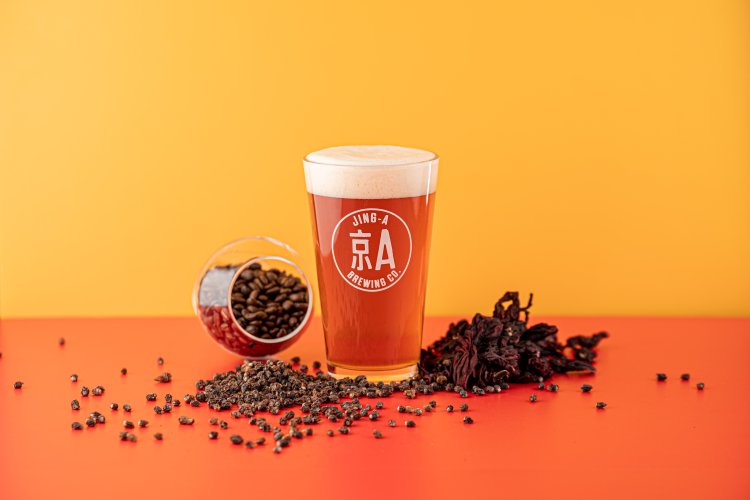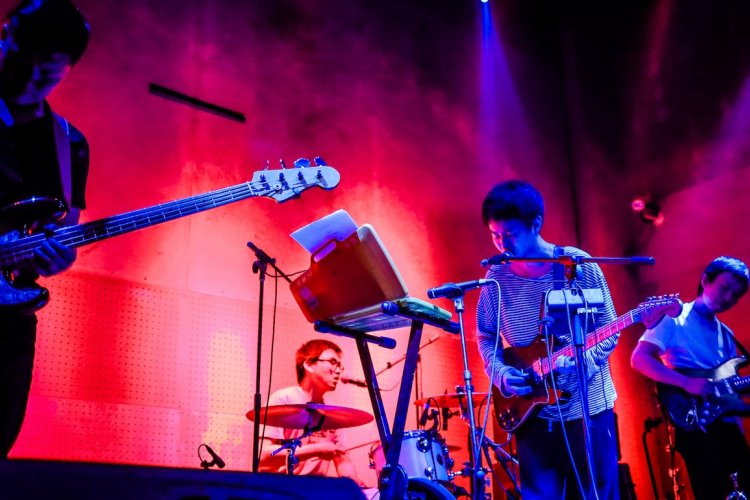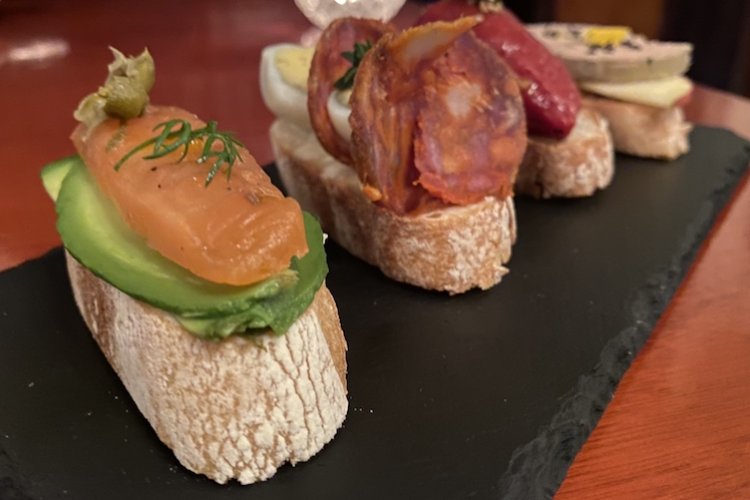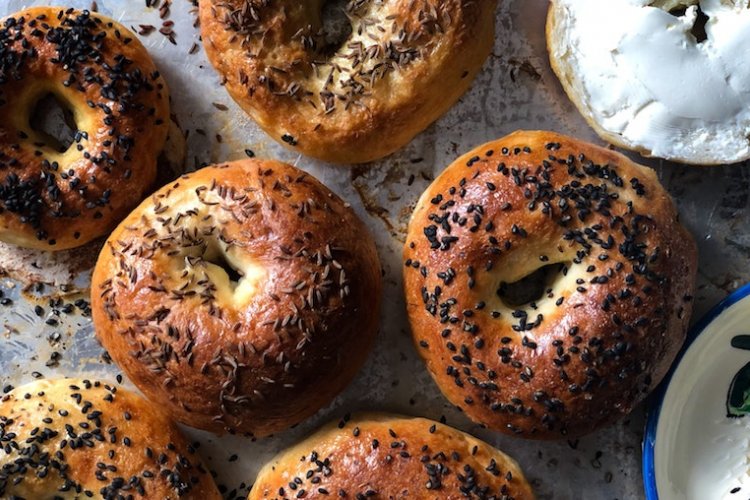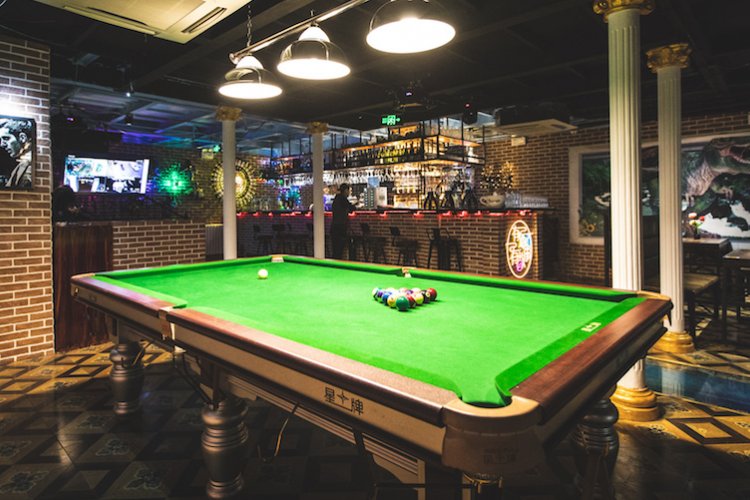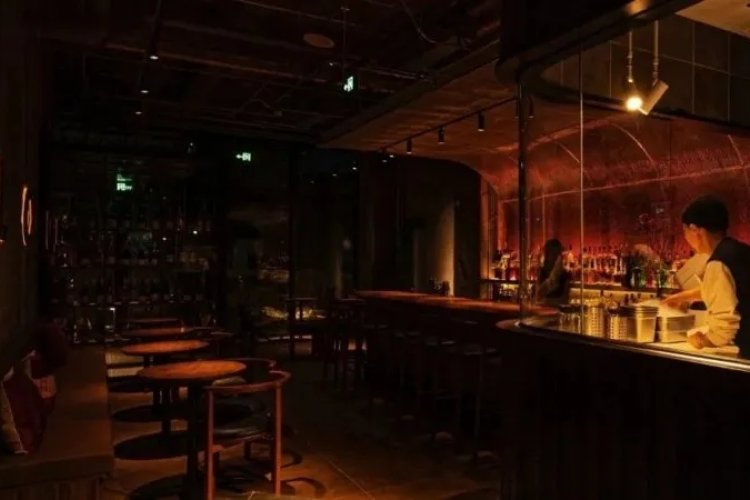Ultimately we decided on dishes that we thought both Chinese and Europeans could appreciate together.
Conceptual Fusion, Cultural Purity: River Club Owner Marco Sacco
Marco and Carlo Sacco put a lot of thought into their restaurants. Every detail, however slight, has a purpose and contributes to the total experience. The brothers’ latest venture, their first in China, is no exception. As Marco Sacco explains it, both the menu and the atmosphere at River Club are designed to express its role as a bridge between Chinese and Italian cultures.
Named for its site overlooking the Liangma on Beijing’s Maizidian Street, River Club is visually engaging. Entering the lobby, one’s first impression is a great wash of nearly turquoise blue. Emerging from the third floor elevator (also blue), one enters a space reminiscent more of an art gallery than a restaurant. The walls are studded with photographs, and what look at first like minimalist light-sculptures. These represent the continents, each showcasing a culinary treasure from of that corner of the world. Not only that, but they disguise a massive wine cellar. The unifying theme of River Club is a global meeting place, situated in China, but anchored to Italy.
Further inside, a honeycomb of semi-private dining rooms exhibit an evolving stylistic motif: the furniture and place settings are sleek, formal and European, while the space itself coaxes diners toward the communal eating style native to China. In the center stands a gleaming show kitchen, where one can observe the lightening-fast movements of the well-trained staff, and occasional bursts of flame. The food that emerges is distinctly Italian. The dishes are carefully selected so as to be understandable to the local clientele, and then inventively transformed, to keep things interesting. This is all part of the Saccos’ strategy to bend the Chinese palate ever so gently toward the flavors of the continent.
Despite being essentially Italian, the food at River Club is also global in the best sense. The Saccos use quality ingredients from a variety of locales to create dishes that represent the best of each place: an array of Italian pastas and antipasti, their signature salmon hamburger from Norway, a beef stew made with Australian grass fed beef, and even a Beijing-inspired confit duck leg. In person, Marco Sacco is reflective, but his passion for great food is immediately evident.
At your restaurant in Verbania, Italy (Piccolo Lago), you are known for using only locally-produced ingredients. Are you doing the same thing here?
Well, because we want to offer authentic Italian cuisine, we need to import many ingredients from the regions where they are produced. But we do use local ingredients as much as possible. What is important is to be able to use products of consistent quality. We plan to start an import/export business in the near future, to help bring more authentic products to China.
How did you come up with the design?
I wanted to create something that is more than just a restaurant. I would like it to be a place where different cultures can come together, to share information and experiences. So we have made it a gallery space, where painters and photographers can display their work, as well as a gastronomic meeting place. A lot of different things can come together here, and achieve a kind of harmony.
And water obviously plays a special role in it.
Yes, when I started thinking about the design of this restaurant together with the Italian designer David Krippa, I had two kind of symbols in mind. One is the color blue, which is the color of the lake where our other restaurant is located, and which we have carried over here as well, in reference to the Liangma River. The other symbol is the number six, which you will find repeated in various places throughout the restaurant. This is because this is our sixth restaurant.
We wanted to organize it around the concept of the private dining rooms that are so typical here in China, but we also wanted to make it an integrated space. That is why the rooms are designed so that they communicate with one another, and are partially visible to one another, but without losing the intimacy that is so essential to this style of dining. The way the rooms are arranged contrasts with the European style of the furniture and place settings, so there are points of reference that both cultures will find familiar.
What motivates you in putting together a restaurant like this?
I am not interested in being fashionable, or doing something first, or anything like that. I want to remain faithful to the traditions of Italy and that style of cuisine. Our first restaurant has been in operation for thirty years, and we have always stayed true to that authentic, family-oriented way of cooking. With this restaurant, I want to bring that same authenticity to Beijing. China also has a culture with a deep respect for tradition, and I think that Chinese people will appreciate that about it.
What do you think about Chinese food?
I love it. Like Italian cuisine, Chinese cuisine has a long history. I am interested in a lot of Asian culinary traditions, not only Chinese, but also Thai, Vietnamese, Japanese, and so on. They are really fascinating because they have an idea of cooking that is completely different from what we are familiar with in Europe. One of the things that I love the most in China is the way meals are shared, by putting the dishes in the center of the table, and having everyone gather together around it. It is especially wonderful when a young couple, for example, is sharing a meal together in a Chinese restaurant. It’s very romantic, very beautiful.
Can you tell us something about your wine selection?
Well, first of all there is a problem with importing wine to China, so we do not quite have all of the wines that we would like to have. That will change once we establish our import/export company. But for now we offer about three thousand wines from all over the world, selected by our sommelier. We also provide wine safes for members, so they can store their most precious wines with us until they are ready to drink them.
How did you go about creating the menu?
When we first got to China, we switched off our mobile phones and computers, closed the doors, and for three days we shut ourselves up in the kitchen. We ordered all of the products we could, and spend the entire time tasting, smelling, testing aromas and textures, and so on. We wanted to analyze everything, and see just what was possible. And we found out a lot of surprising things. Finally we decided on the best dishes and courses as a result of what we discovered. Those initial stages are really the most beautiful part of the process, I think. It would be wonderful if we could do that every day. Ultimately we decided on dishes that we thought both Chinese and Europeans could appreciate together.
What are the dishes you would recommend to any fist time visitor?
If you want to discover the Piedmont and its traditions, you must try the carbonara “à la coque,” which is an iconic dish of Italy, and a signature dish of Piccolo Lago. It not only represents the region and the products of Italy, but also innovation and design, since it is presented in a very special way. I think it is actually the dish that most represents me, too. It is perhaps too early to make something like this here, though. At first, you need to try something very simple, something where everyone can find common ground.
Your desserts are so playful. Where do you get your ideas for them?
I think that when people come to a restaurant, they expect everything to be very elegant and very formal. For dessert, though, there is a wonderful opportunity to do something different. Dessert is where you can rediscover the psychology of a child. So I like to present a lot of small, pretty things that you can discover and take delight in. I want to bring my customers back to a sense of childlike wonder and excitement, which is something that is only really possible with sweets.
What is your favorite wine on the list?
Timorasso, by Walter Masso. It is the king of red wines. And it is also from Piedmont, just like us!
River Club. Daily 11:30am-10:30pm. 53 Maizidian Xijie (East Side of FX Hotel), Chaoyang District
朝阳区朝阳区麦子店西街53号(富驿时尚酒店东侧)

